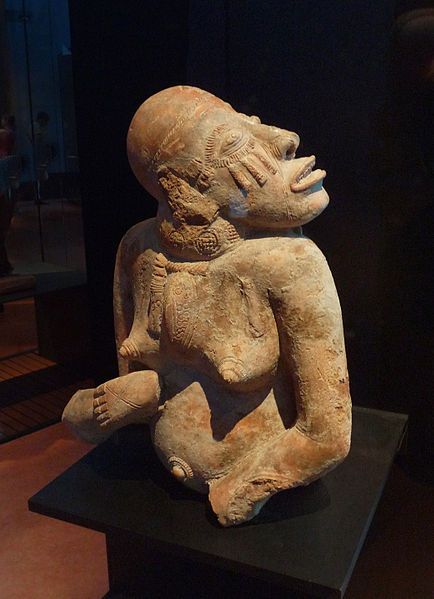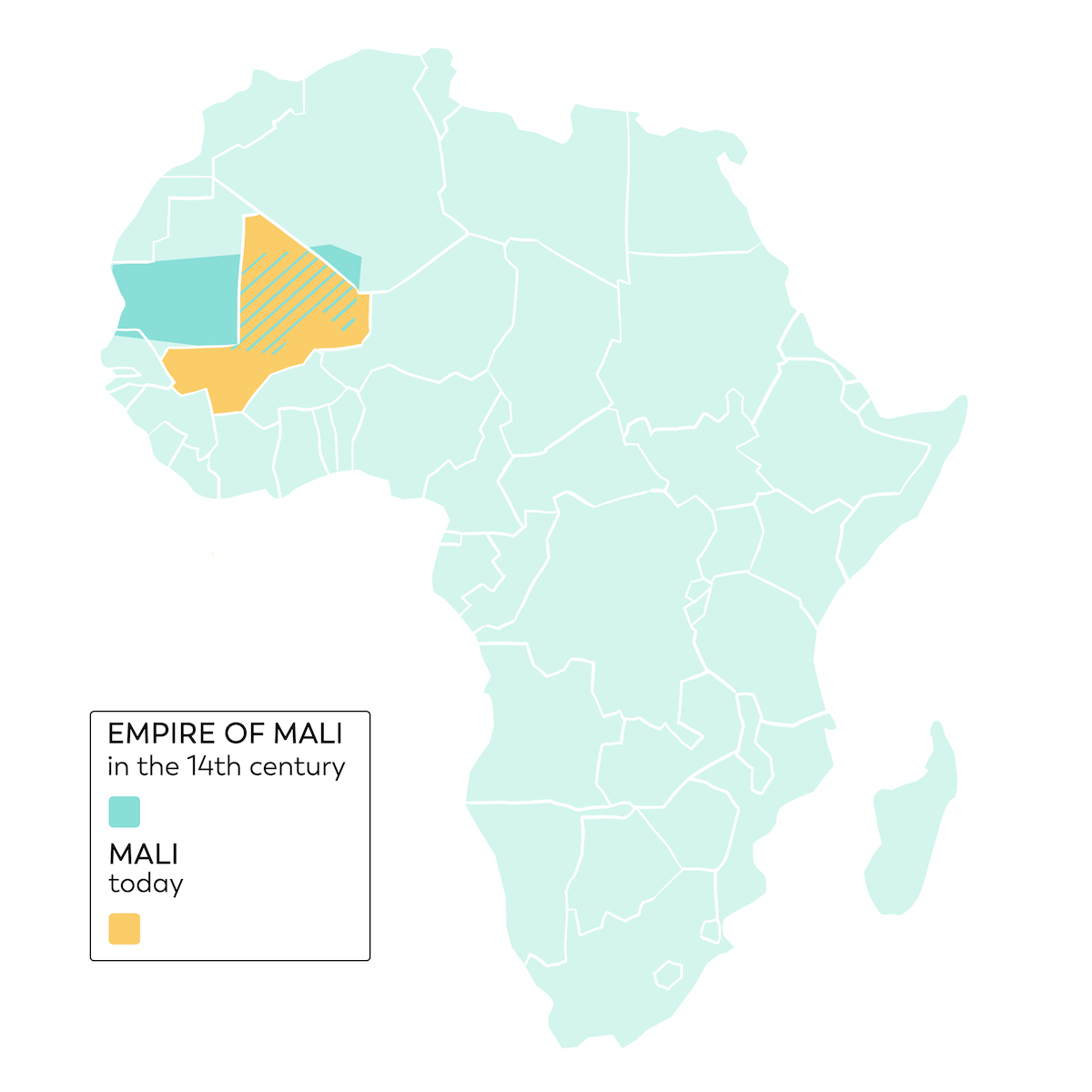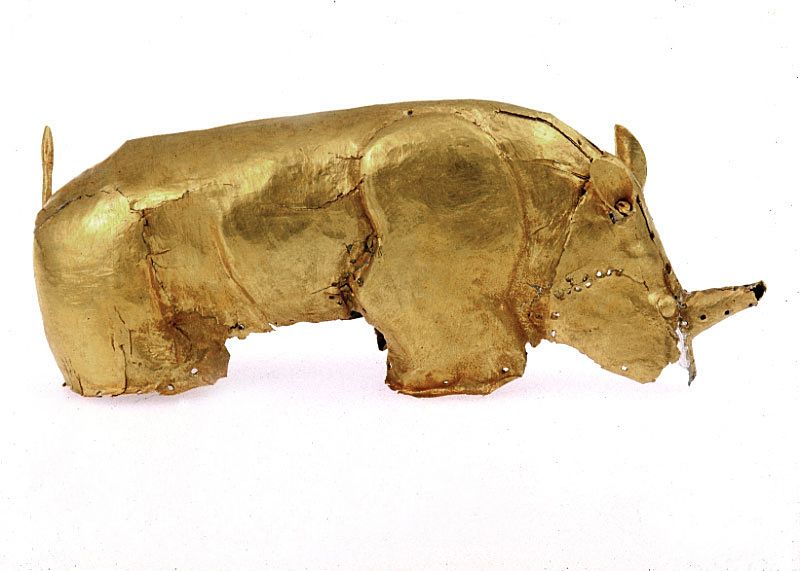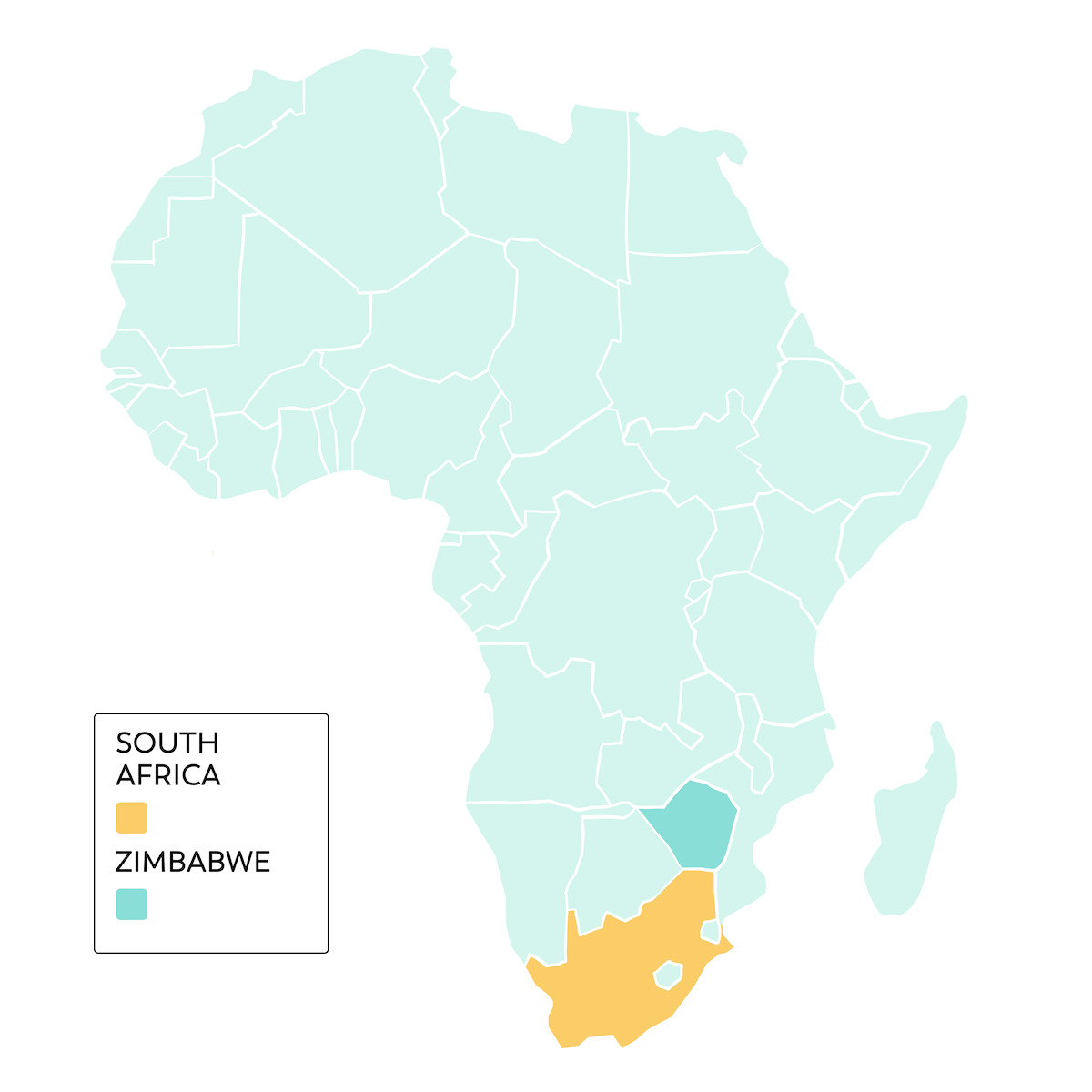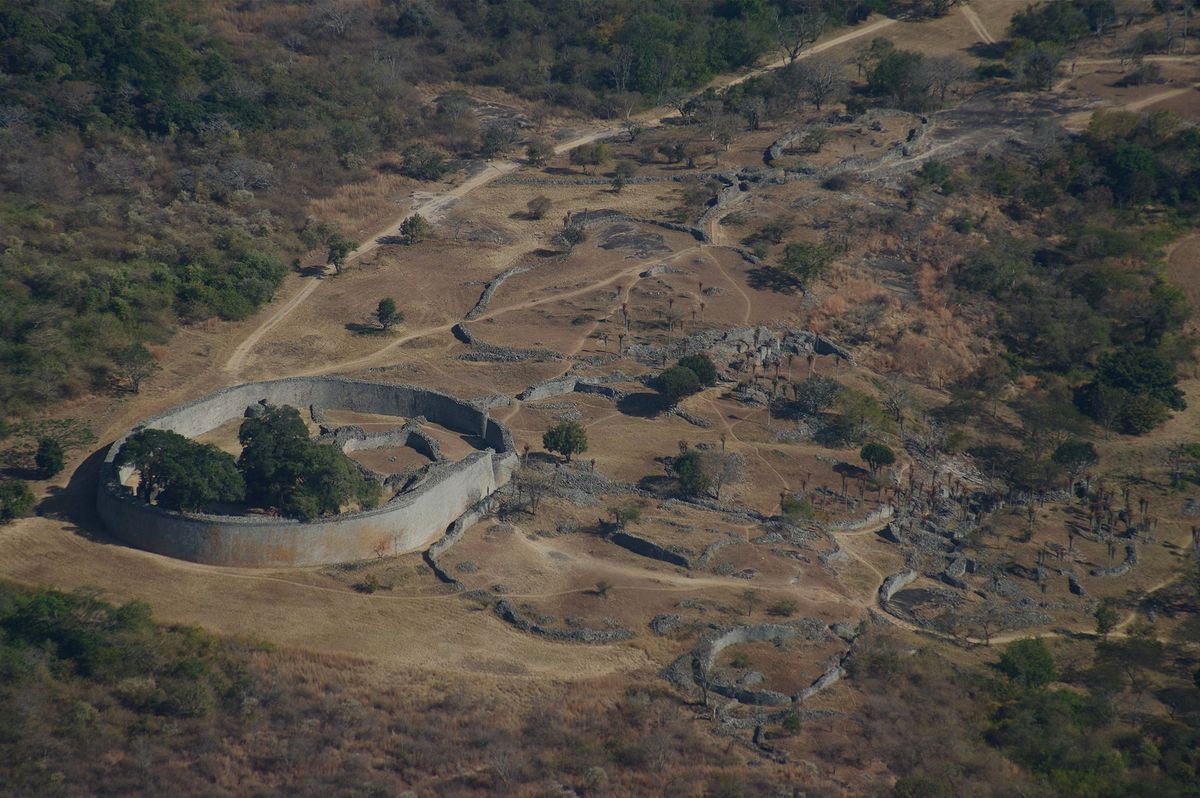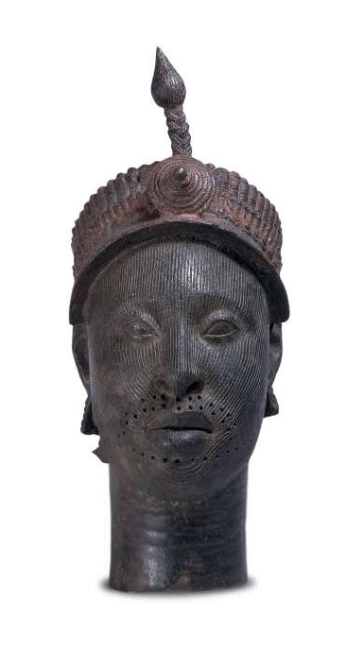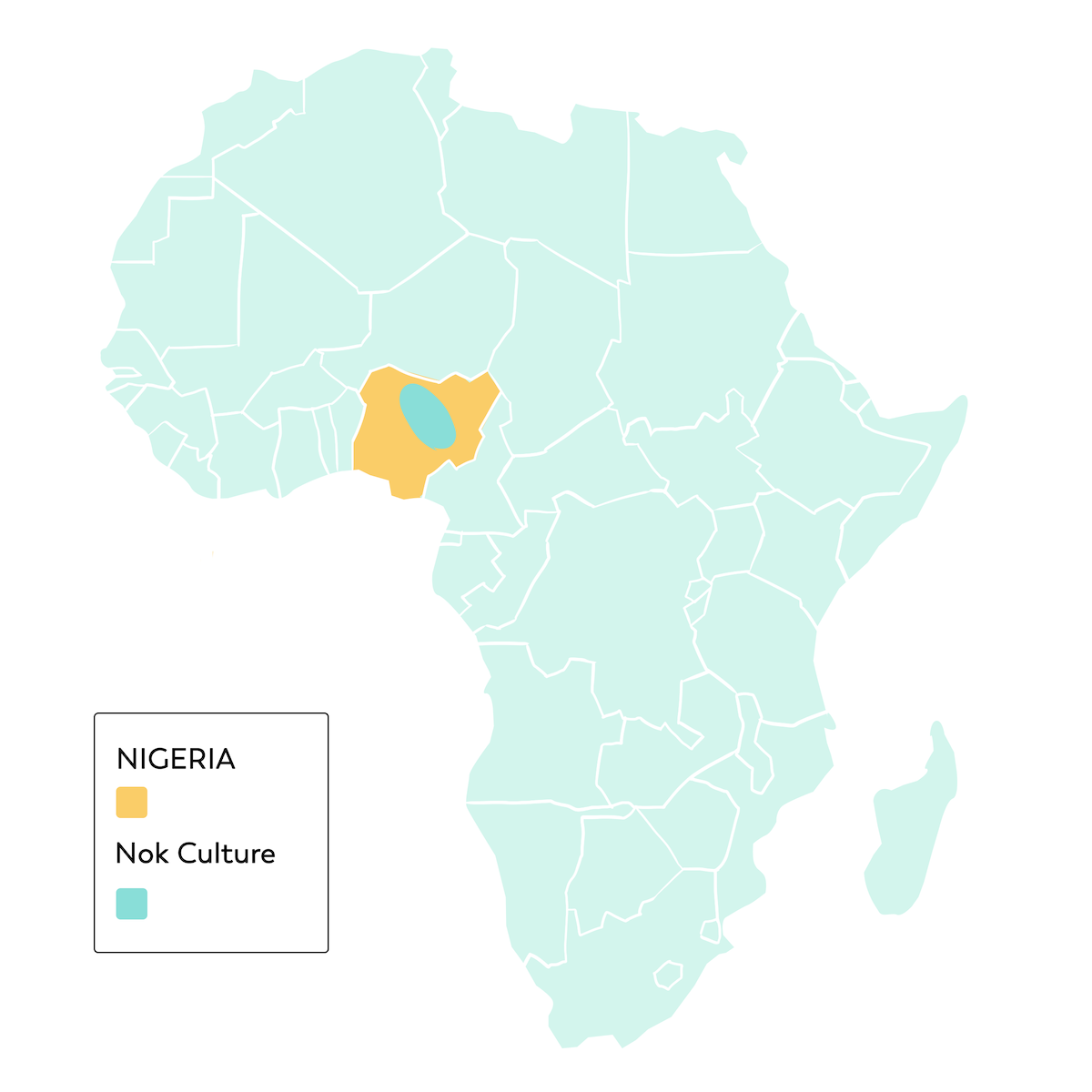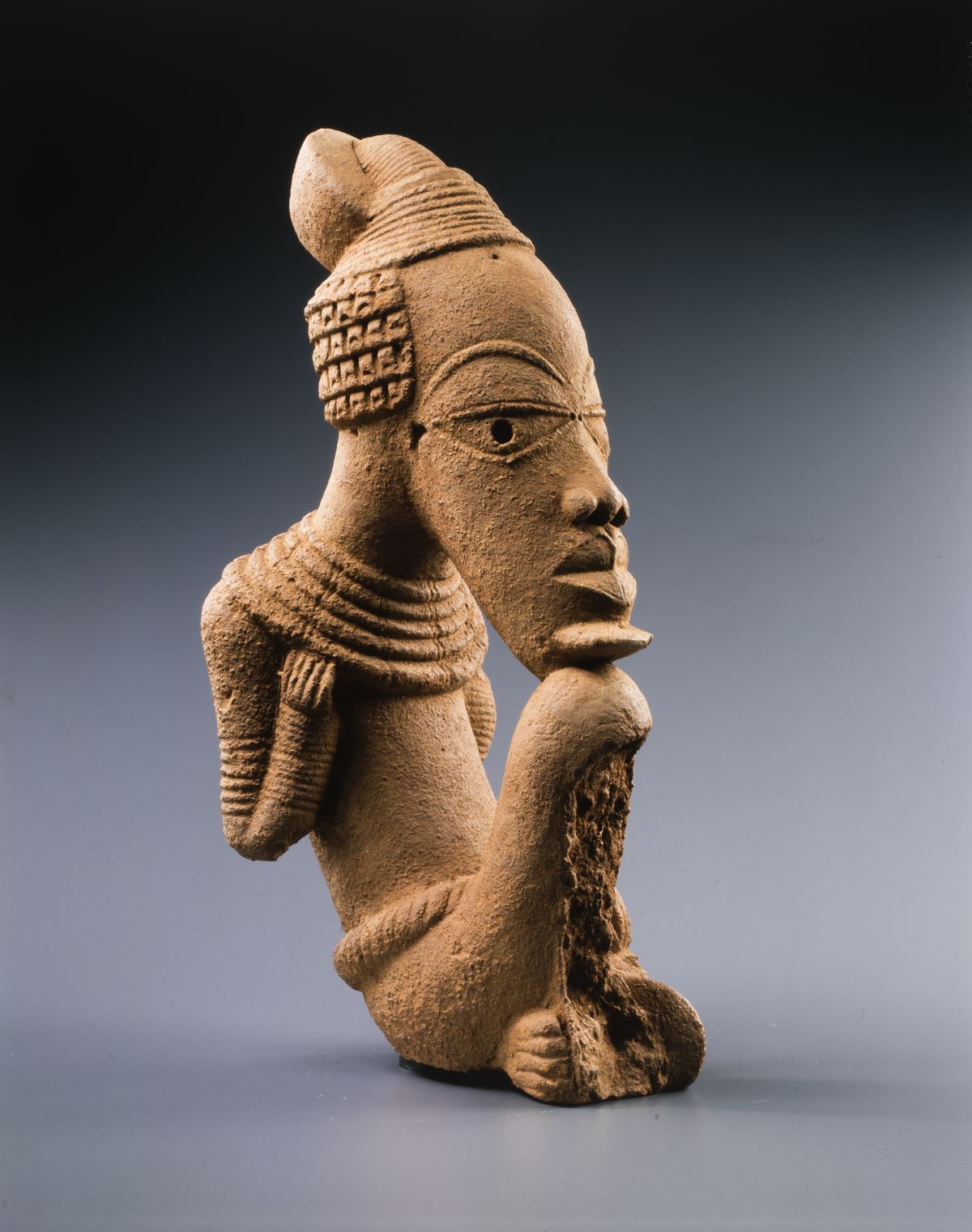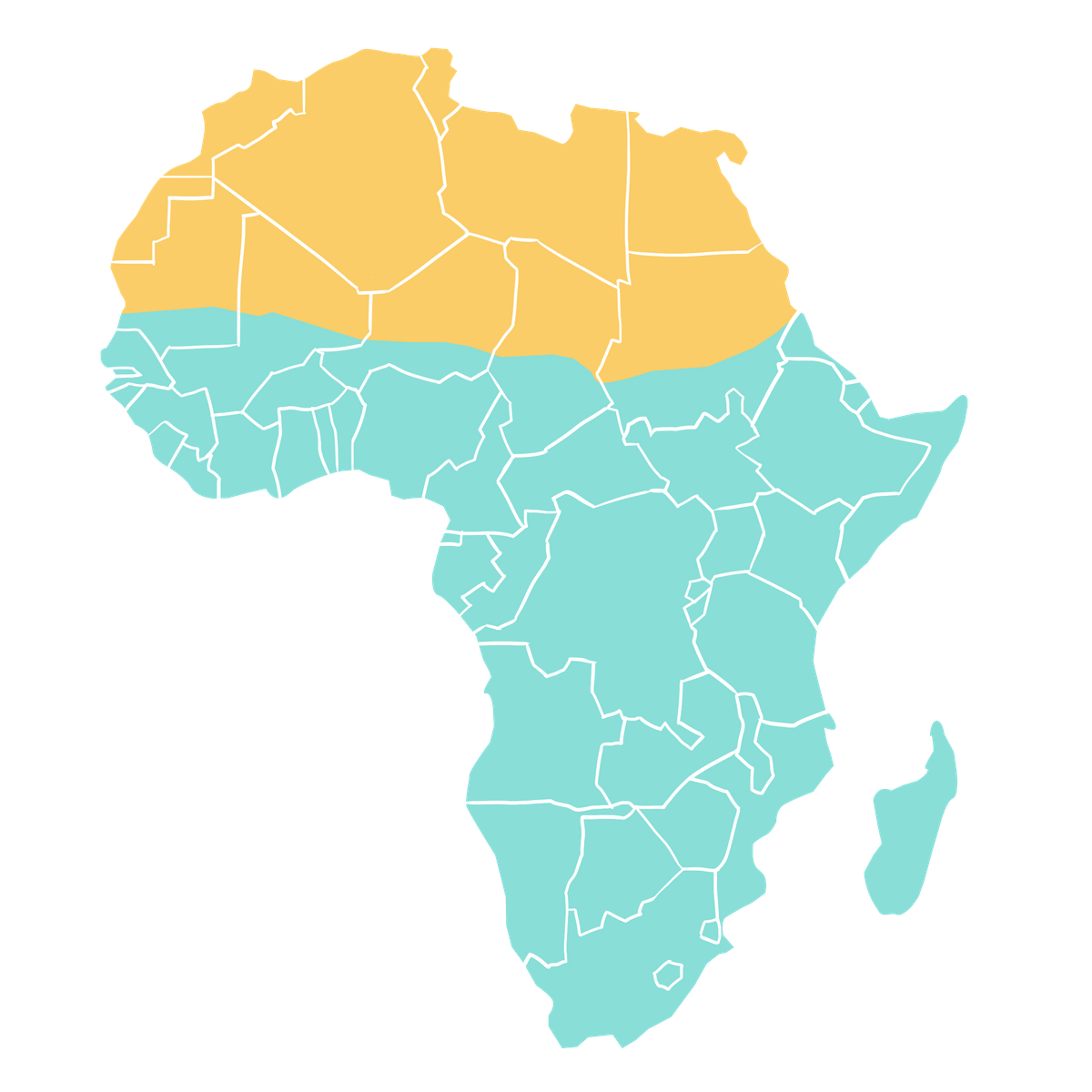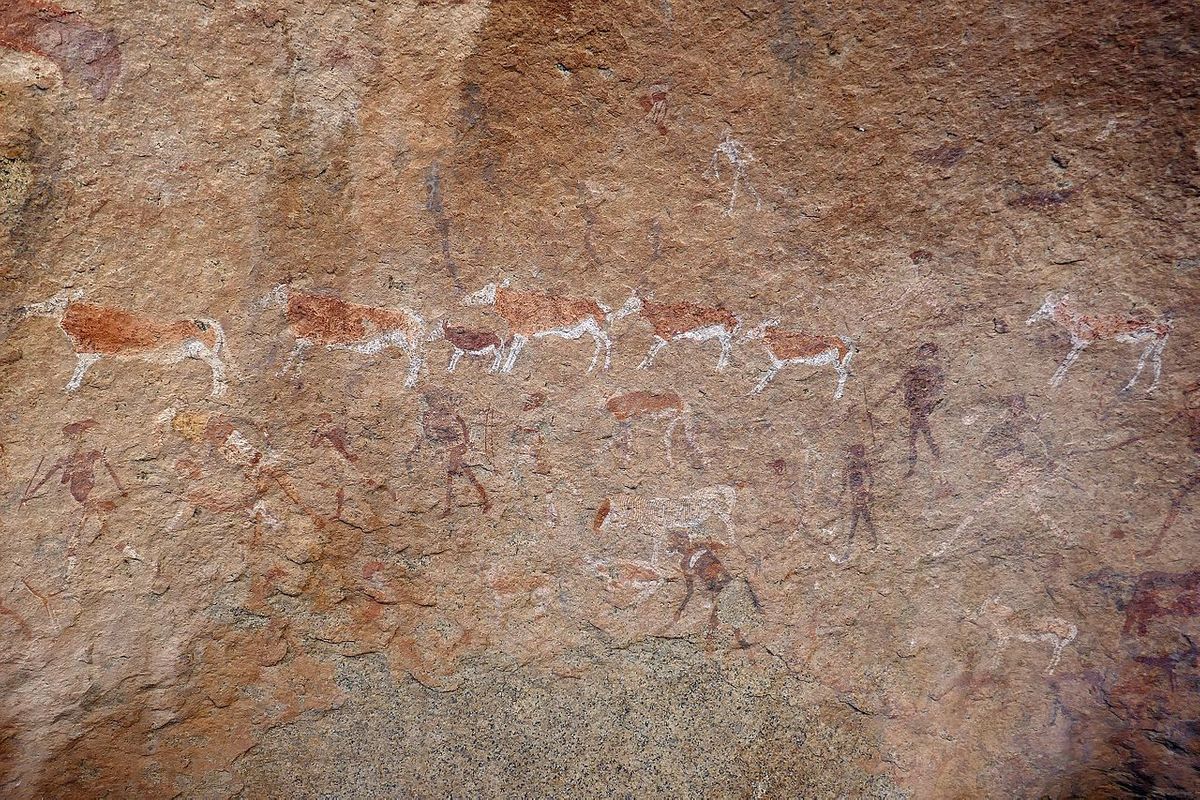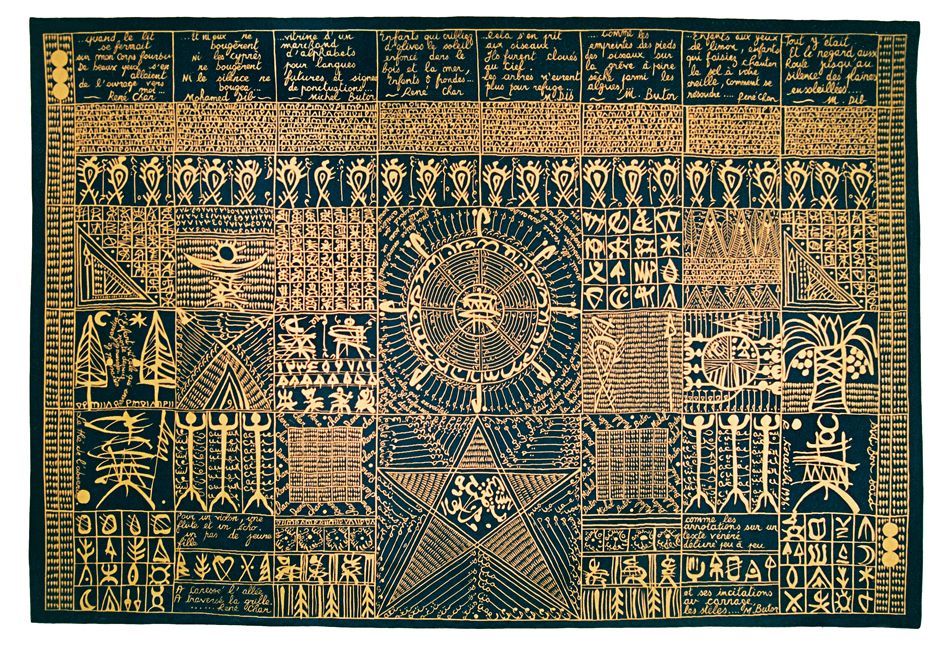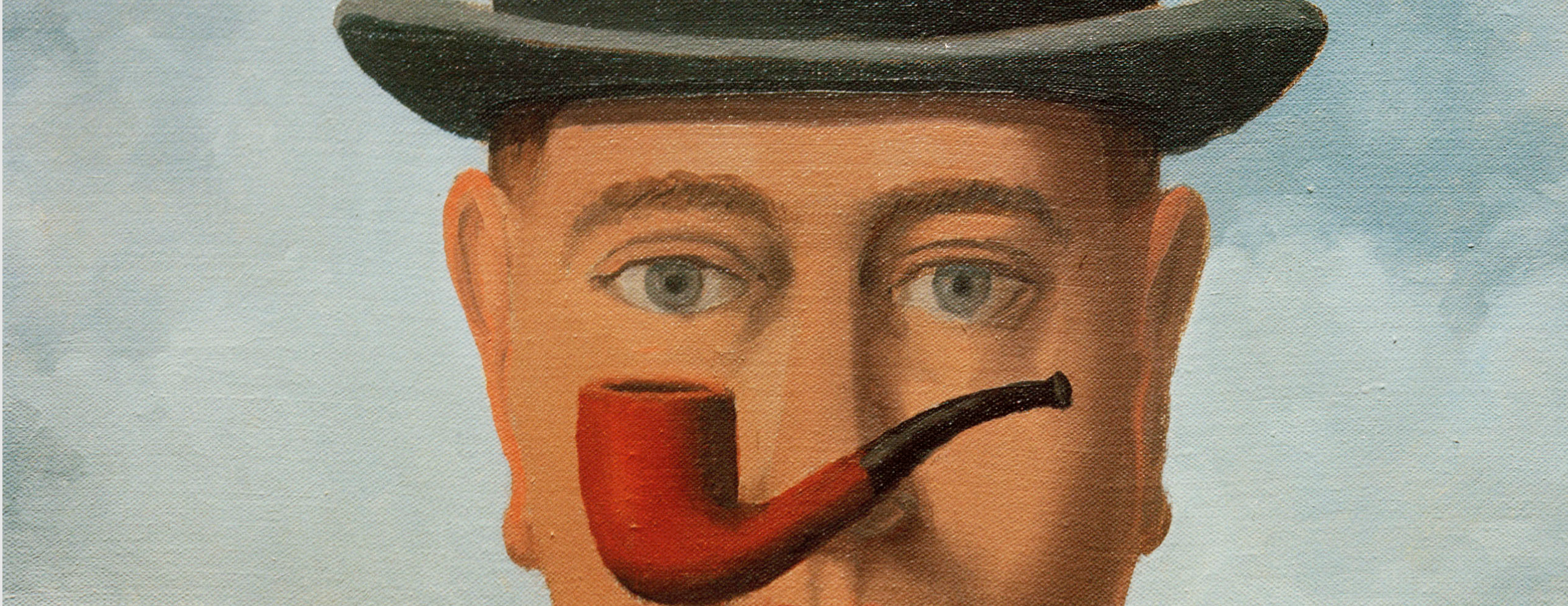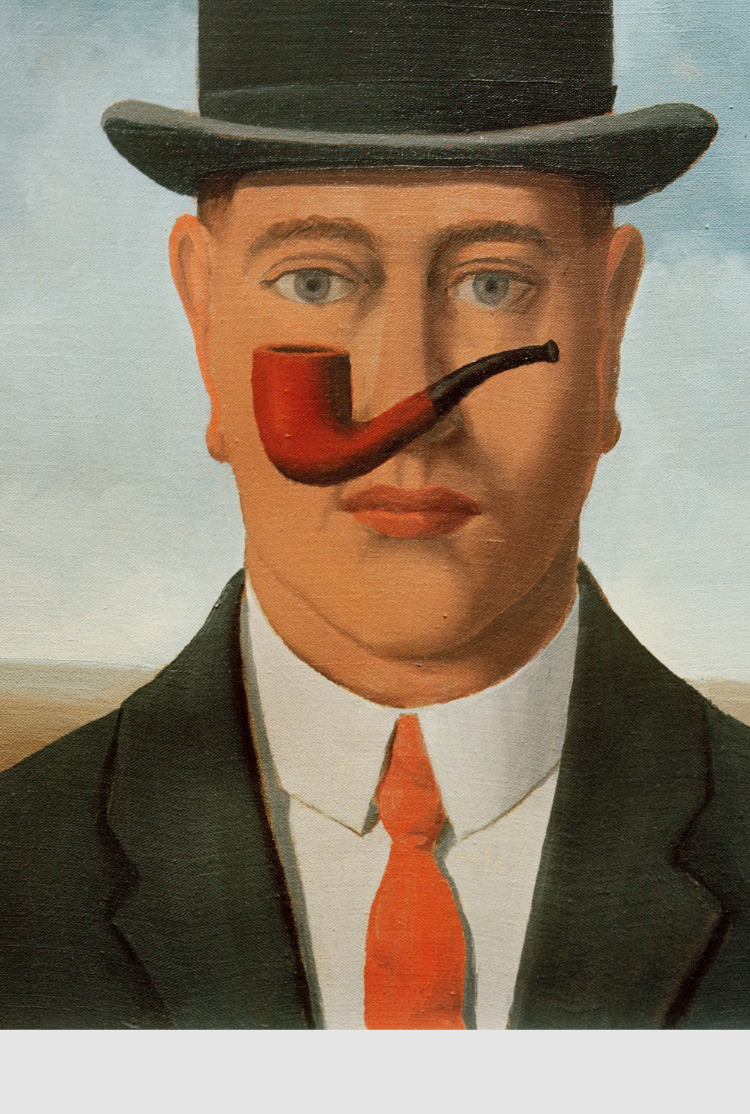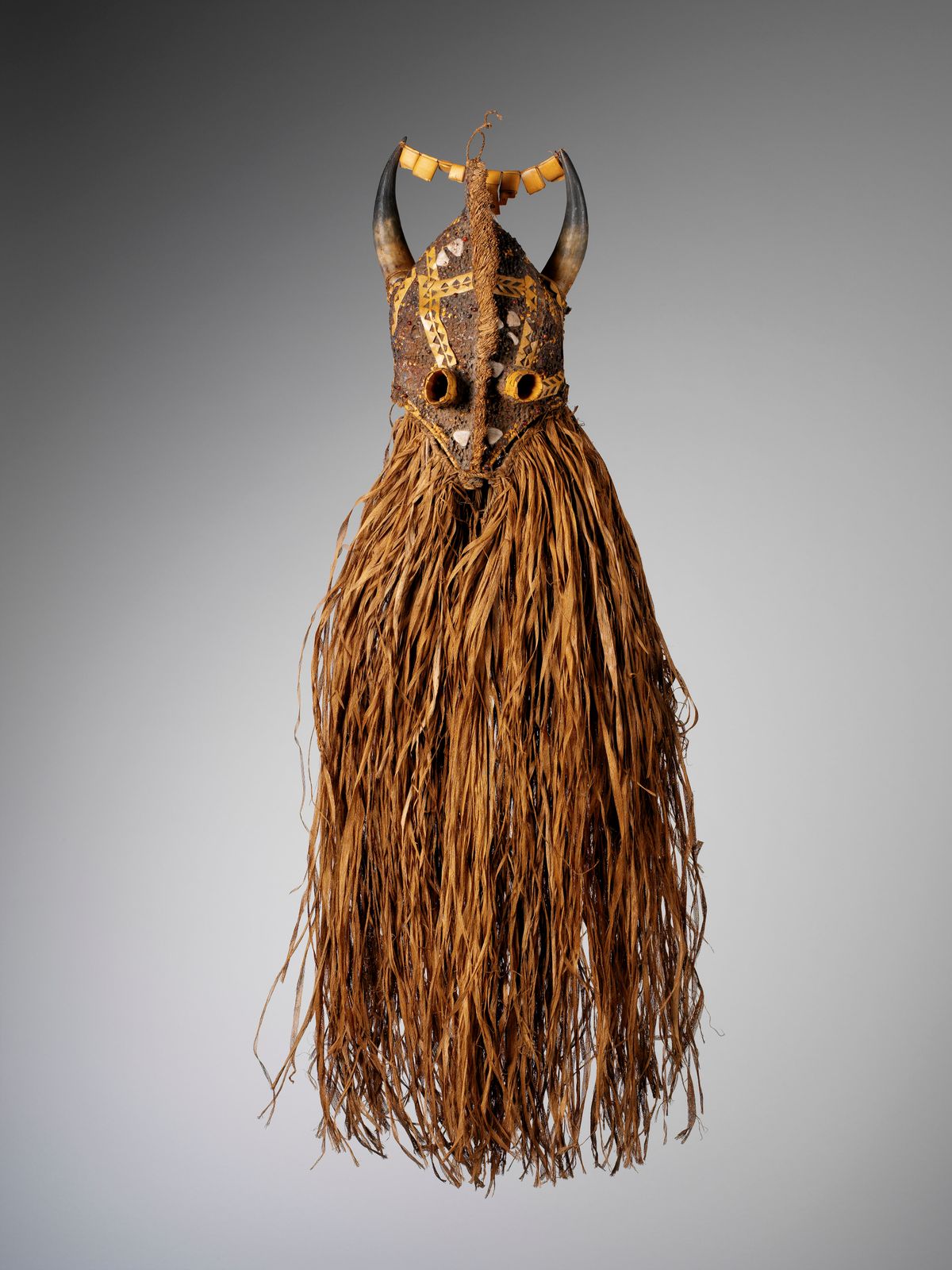
“Ejumba” zoomorphic mask
19th century, Diola culture, Senegal, wickerwork, 48 x 12 x 9 inches, Quai Branly-Jacques Chirac Museum, Paris. Photo: © musée du quai Branly – Jacques Chirac, Dist. RMN-Grand Palais / Patrick Gries
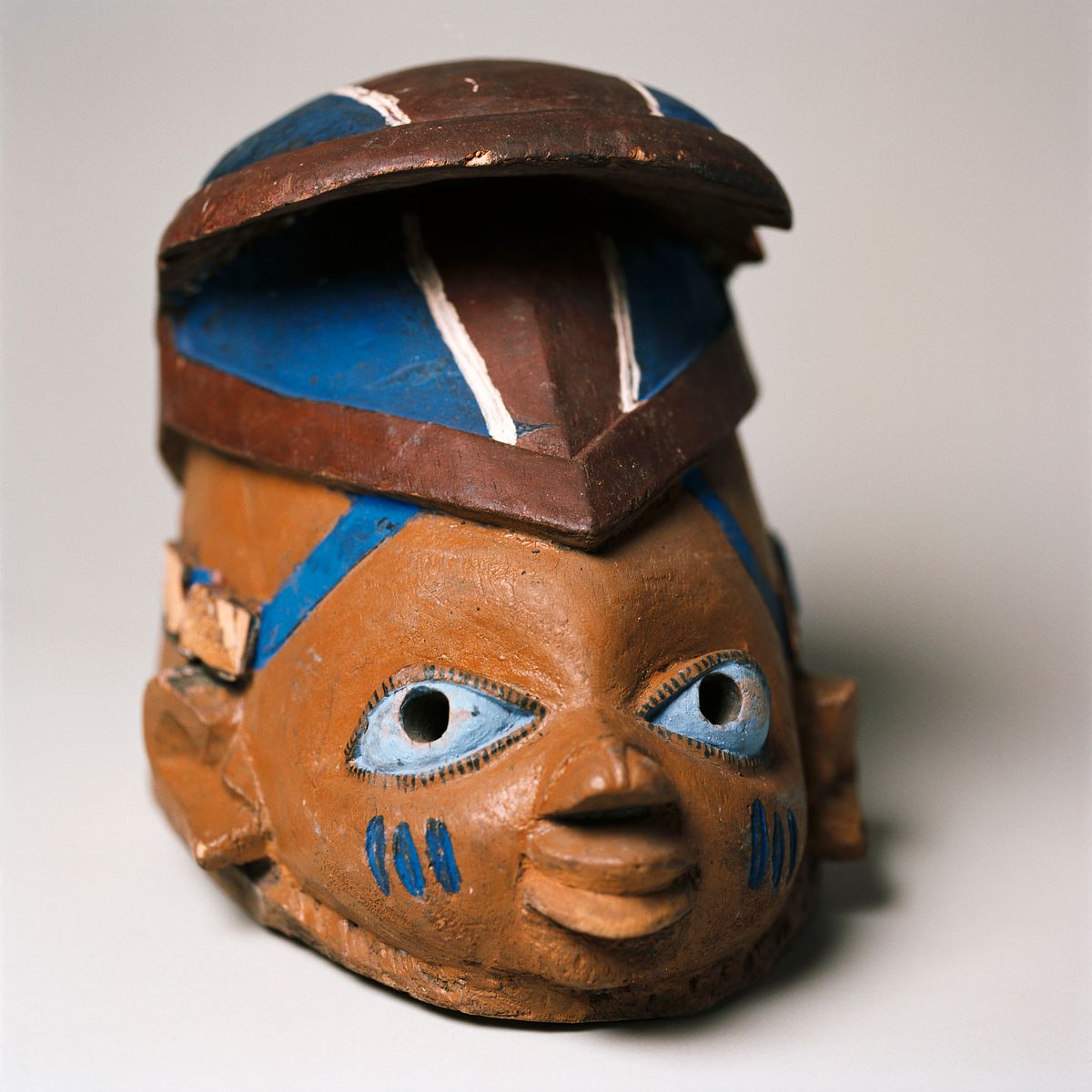
Anthropomorphic Mask
20th century, Yoruba culture, West Africa, wood, 9 x 12 x 8 inches, Quai Branly-Jacques Chirac Museum, Paris. Photo: © musée du quai Branly – Jacques Chirac, Dist. RMN-Grand Palais / Sandrine Expilly
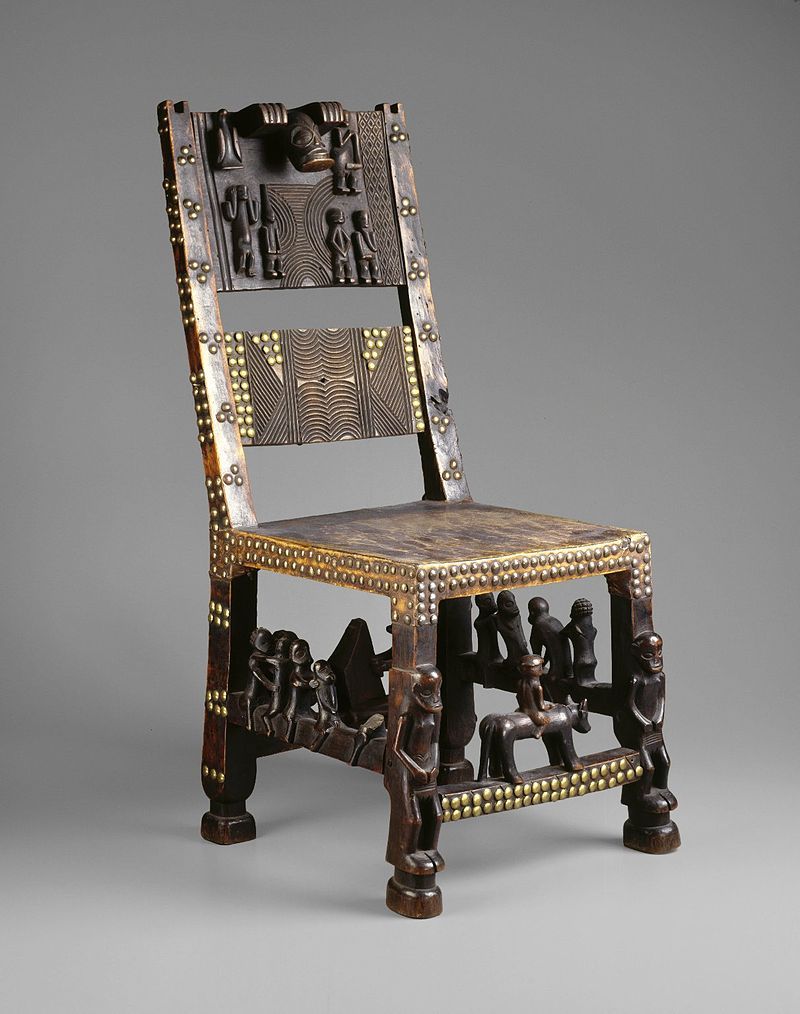
Chief’s Chair
19th century, Tshokwe culture, hardwood chair with patina, bronze nails, 25 inches high, Brooklyn Museum, New York. Photo: Brooklyn Museum CC BY 3.0
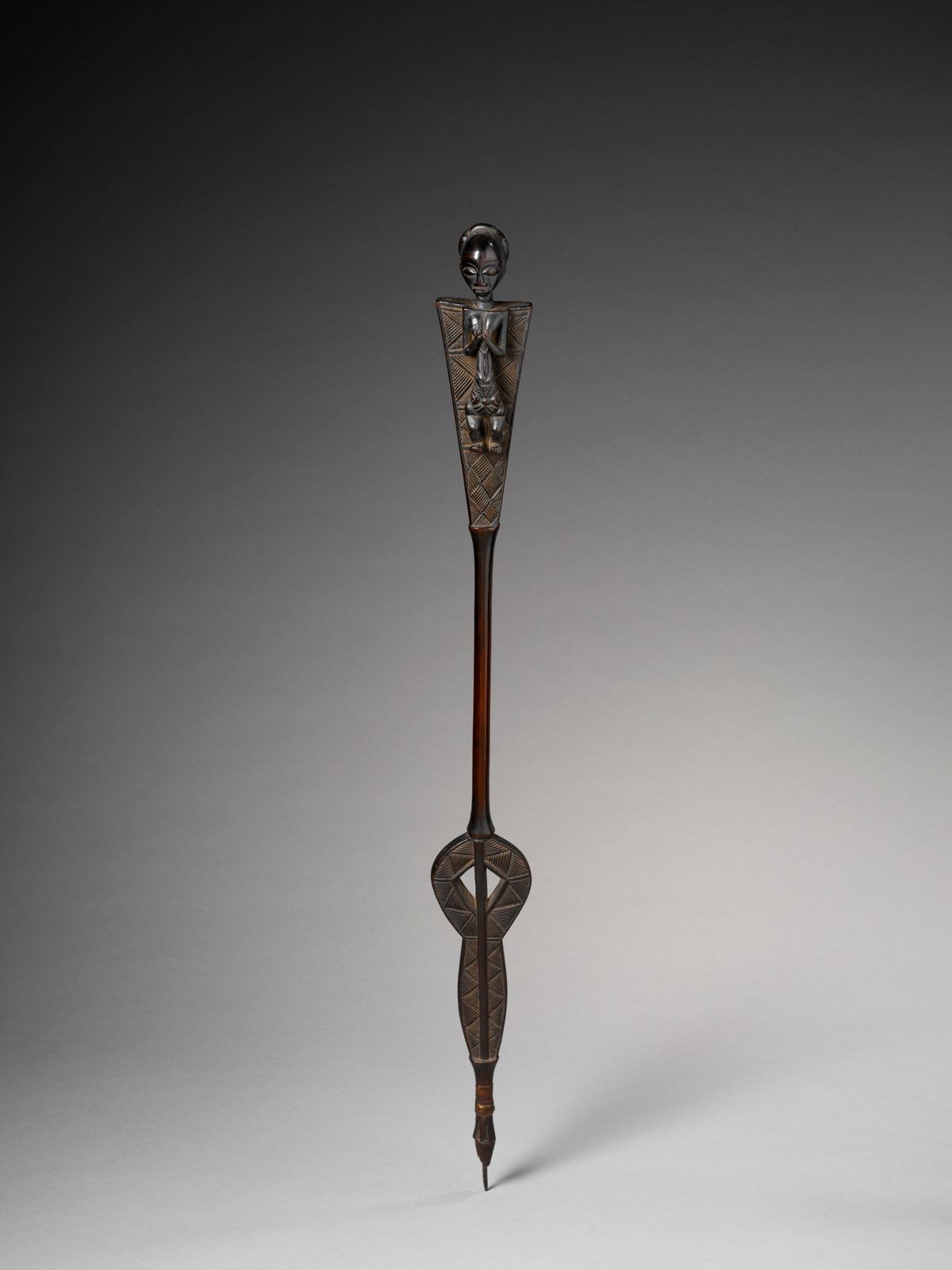
“Kibango” chief’s sceptre,
19th century, Luba culture, wood, 51.5 x 49 x 49 inches Quai Branly-Jacques Chirac Museum, Paris. Photo: © musée du quai Branly – Jacques Chirac, Dist. RMN-Grand Palais / Patrick Gries

